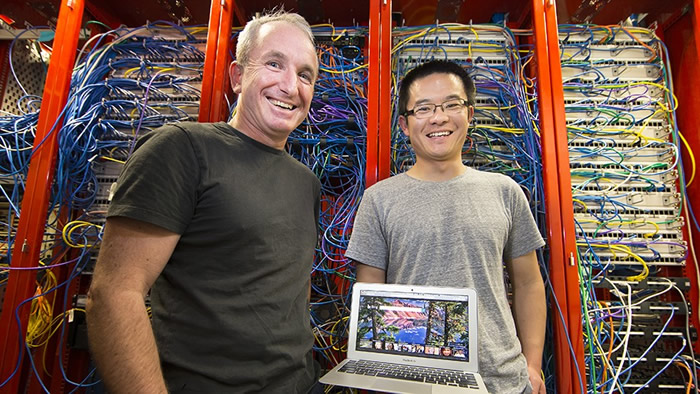OS tweak leads to 25% more data center efficiency
Computer scientists have developed a tweak for computer operating systems that could make large data centers 25% more efficient by sharing their processing power. Researchers at The Australian National University (ANU) and Microsoft collaborated to develop the new system mechanisms, which give big improvements in energy efficiency for servers that run searches and interact with users.
Professor Steve Blackburn from ANU Research School of Computer Science said the improvement in efficiency was inspired by the fairy tale of the Elves and the Shoemaker.
“Computer servers spend a lot of time waiting around for search requests to come in. By sneaking in other processes while they are waiting, we can use the computers more efficiently,” Professor Blackburn said.
“It’s just like the elves that used the shoemaker’s tools at night in the Brothers Grimm fairy tale.” The speed of searches and other web services that interact with users are crucial to the success of large internet services provided by Microsoft, Google, and Facebook. A delay as small as a hundredth of a second will mean lost revenue for companies.

“However, the companies have no control of when users will request a search, so they have large server capacity that is mostly idle,” said Xi Yang, a PhD student at the ANU Research School of Computer Science.
Mr Yang collaborated with Professor Blackburn and Dr Kathryn McKinley at Microsoft to work out a way for processes that are not time critical to use the operating system while it is idle, and to quickly step out of the way when search requests come in.
“The techniques are extremely easy to implement on current hardware,” said Mr Yang. “In some cases that we studied, the new techniques made a server nine times more efficient.”
A key to streamlining the operating system was analyzing server and application performance in great detail, so that the extra processes could be slipped into the gaps.
“We have analysed the operating system’s performance 100 times more closely than before, which is crucial, because much of the activity that occurs inside a computer happens at very high frequencies,” Mr Yang said.
Dr McKinley said the result means more than just a fast internet search. “This work has the potential for enormous impact in data centers – it could save over 25% of the data center energy bill for these companies, a huge win,” she said.
“We share resources by exploiting in a new way a feature of hardware called Simultaneous Multithreading. Many companies turn off this feature, because without our approach, sharing wreaks havoc with the responsiveness of interactive services, such as searches.
“With our new fine grain control hardware control, we can substantially improve the efficiency of data center servers while achieving the same responsiveness,” she said.
More information: Australian National University

Comments are closed, but trackbacks and pingbacks are open.